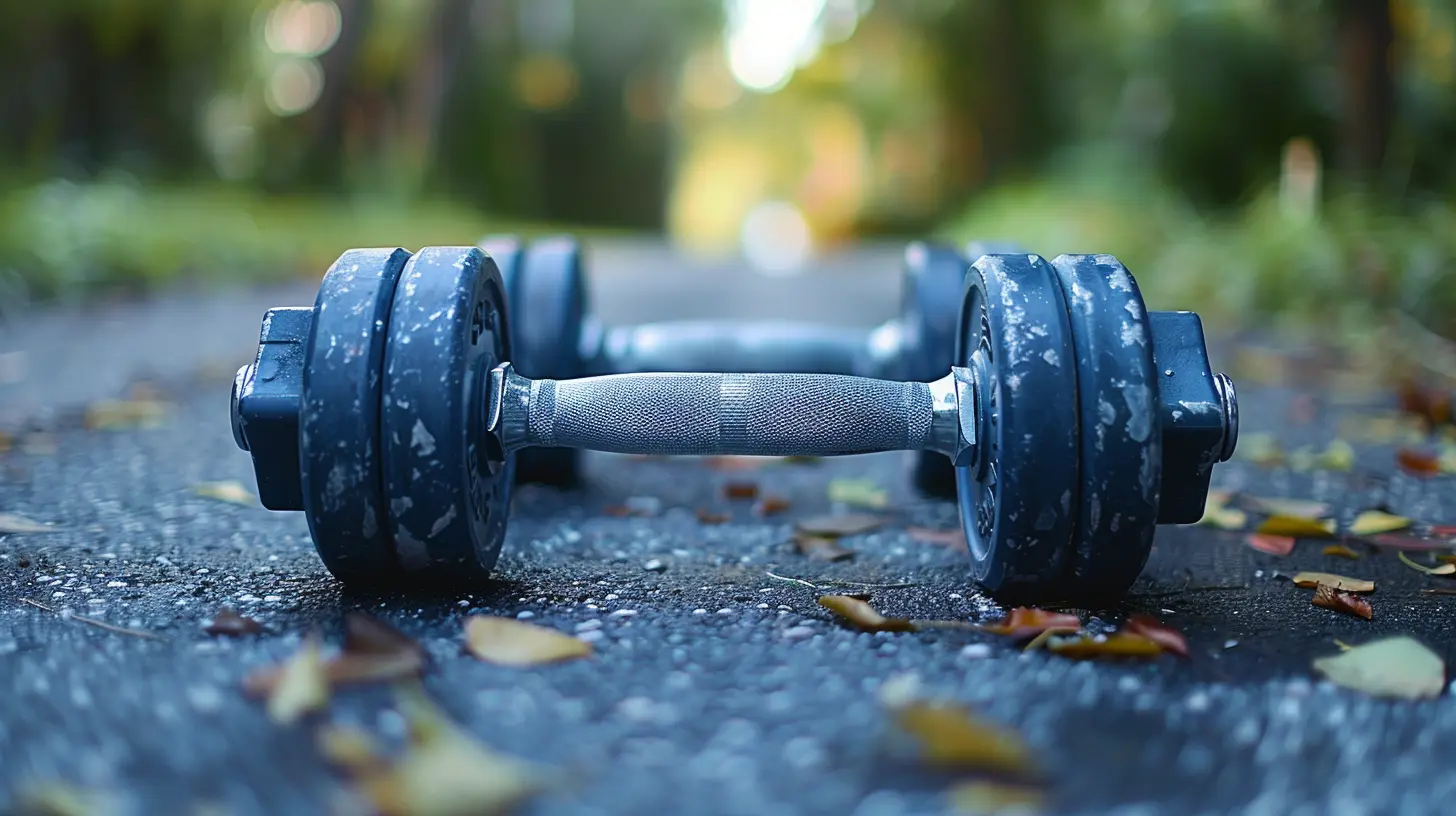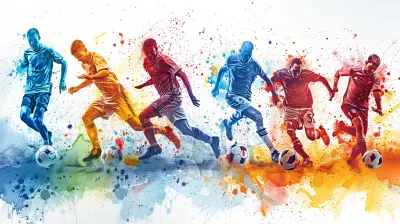How to Improve Your Posture Through Strength Training
9 June 2025
Let’s get real—posture isn’t something most of us think about until we catch a glimpse of ourselves hunched over in a photo or feel that annoying ache in our lower back after a long day. But here’s the truth: posture matters more than most people realize. It affects how we walk, sit, stand, breathe, and even how confident we appear.
So, what’s the secret sauce to standing tall and pain-free? You guessed it: strength training. 🏋️♀️
Strength training isn’t just for bodybuilders or gym bros. It’s for anyone who wants to move better, feel better, and yes—look better. The good news? It’s never too late to start. In this fun and cheerful guide, we’re diving deep into how to improve your posture through strength training. So roll back those shoulders, take a deep breath, and let’s get into it!
Why Posture Even Matters (Yes, Really!)
Before we jump into workouts, let’s chat about why posture isn’t just your chiropractor's obsession. Good posture:- Reduces strain on your muscles and joints
- Helps you breathe more easily (hello, more oxygen!)
- Improves balance and coordination
- Boosts confidence (shoulders back = instant superhero vibes)
- Prevents future injuries and chronic pain
Poor posture, on the other hand? It’s like driving a car with the wheels misaligned. It might still “work,” but you’re headed for problems down the road.
What Causes Bad Posture?
Let’s play detective for a second. If your posture isn’t perfect, there’s usually a sneaky culprit—or a few!1. Sedentary lifestyle
Sitting for hours—especially with a slouch—can cause your muscles to weaken and tighten in all the wrong places.2. Weak core and back muscles
If your supportive muscles are asleep on the job, your body will slump by default.3. Muscle imbalances
Too much chest work and too little back training? That imbalance can yank your shoulders forward.4. Poor ergonomics
Craning your neck toward your laptop like a curious turtle? Guilty as charged.
How Strength Training Helps Fix Posture
Here’s where the magic happens. Strength training targets the exact muscles that support your spine and pelvis. Think of it like upgrading the scaffolding in a building—the better the structure, the better the alignment.When you strengthen the right muscle groups and stretch the tight ones, your body starts to realign. It’s like your posture gets a wake-up call!
Key Muscle Groups to Focus On
Building better posture isn't about doing random exercises and hoping for the best. You’ve gotta be strategic.✅ Core Muscles
Your core is more than just abs—it includes the deep stabilizing muscles that support your spine from front to back.- Why they matter: A strong core keeps your spine upright rather than letting it collapse forward.
- Train it with: Planks, bird dogs, dead bugs, and weighted carries.
✅ Upper Back and Shoulders
Your traps, rhomboids, and rear delts work together to pull your shoulders back and open up your chest.- Why they matter: They counteract all that forward hunching from texting and typing.
- Train it with: Face pulls, rows, and reverse flyes.
✅ Glutes
Your glutes stabilize your pelvis and spine, especially while walking and standing.- Why they matter: Weak glutes can tilt your pelvis forward (hello, duck butt) and stress your lower back.
- Train it with: Hip thrusts, glute bridges, and Romanian deadlifts.
✅ Hamstrings
These guys often get tight and weak, especially if you sit a lot.- Why they matter: Balanced hamstrings help maintain proper spine alignment and support your hips.
- Train it with: Hamstring curls, good mornings, and kettlebell swings.
Posture-Perfect Strength Training Exercises
Now, let’s get into the good stuff—the moves that actually improve posture. You don’t need a fancy gym or hours of time. Just a few intentional exercises, done consistently.1. Wall Angels
Muscles hit: Upper back, shoulders- Stand with your back flat against the wall—like REALLY flat.
- Raise your arms into a goalpost shape and slowly move them up and down.
- Keep your arms and back touching the wall the entire time.
_Why it works_: It strengthens the muscles responsible for pulling your shoulders back and down.
2. Deadlifts
Muscles hit: Glutes, hamstrings, core, back- Hinge at your hips, grab a weight (or even a heavy backpack!), and stand tall.
_Why it works_: Deadlifts build the entire posterior chain—aka the stuff that holds you upright.
3. Plank Variations
Muscles hit: Core, glutes, shoulders- Get into a push-up position and hold. Try side planks too!
_Why it works_: Planks force your stabilizing muscles to engage, keeping your spine in perfect alignment.
4. Face Pulls
Muscles hit: Rear delts, traps, rhomboids- Use a band or cable machine. Pull toward your face with elbows high.
_Why it works_: Great for reversing rounded shoulders and improving shoulder joint health.
5. Bird Dogs
Muscles hit: Core, glutes, lower back- From a tabletop position, reach one arm forward and the opposite leg back, then switch.
_Why it works_: Teaches core control and stability—essential for maintaining upright posture.
6. Romanian Deadlifts
Muscles hit: Hamstrings, glutes, lower back- Slightly bend your knees, hinge at the hips, and lower the weight slowly.
_Why it works_: Strengthens your posterior chain and reinforces the hip hinge movement pattern.
Stretch It Out: Muscles That Need Lengthening
While strengthening is key, stretching tight muscles can’t be ignored. It’s like balancing a teeter-totter.Stretch These:
- Chest: Opens up shoulders- Hip Flexors: Prevents anterior pelvic tilt
- Neck: Relieves tension from “tech neck”
- Calves and Hamstrings: Easier to maintain flat feet and upright posture
So, do yourself a favor—spend at least 5-10 minutes stretching after your strength sessions.
Real Talk: Your Posture Isn’t Going to Fix Itself
Let’s be honest, friend. Improving posture takes effort, consistency, and patience. But the payoff? Totally worth it.Think more energy, fewer headaches, better workouts, and flexing that confident stance in all your photos. Plus, you’ll dodge a ton of future aches and pains. Talk about a win-win!
Tips to Stay Consistent (and Actually See Results)
We get it—life’s busy, and workouts can sometimes feel like a chore. But here’s how to make your posture-improving strength training stick.💡 Set a reminder
Schedule your workouts like appointments.💡 Focus on quality over quantity
Even 15-20 minutes a few times a week can make a big difference if you're consistent.💡 Take posture pics
Nothing like seeing your before-and-after progress to keep you motivated.💡 Mix it up
Change exercises periodically to stay engaged and avoid boredom.💡 Track how you feel
Fewer back aches? Easier time breathing? That’s progress, too!How Long Until You See Results?
This depends on your starting point and how consistent you are. Most people notice small improvements within 2–4 weeks. Think:- Reduced tension in your neck and shoulders
- Less back pain
- Standing taller without even thinking about it
Stick with it for 2–3 months, and you’ll be absolutely amazed. We're talking head-held-high, red-carpet posture!
The Takeaway: Strong Muscles = Strong Posture
Improving your posture isn’t about wearing a brace or doing endless stretches. It’s about building a strong, balanced body that supports you through all of life’s movements (and misadventures 🧗).So start with a few exercises, stay consistent, and watch as everything—from your mood to your movement—starts to level up.
You’ve got this! Now go out there and own your space like a pro.
all images in this post were generated using AI tools
Category:
FitnessAuthor:

Umberto Flores
Discussion
rate this article
3 comments
Lisette Kim
Great article! Strength training is essential for improving posture, as it builds the core and back muscles that support proper alignment. Focusing on exercises like planks, deadlifts, and rows can make a significant difference. Incorporating these into a routine can lead to lasting posture improvement. Keep up the good work!
June 16, 2025 at 4:41 AM

Umberto Flores
Thank you for your thoughtful comment! I completely agree—strength training is key for better posture. Your suggestions are spot on!
Zayn McElhinney
While the article emphasizes strength training as a pathway to improved posture, it overlooks the importance of flexibility and mobility. A holistic approach, balancing strength with stretching and core stability, is essential for sustainable posture enhancement and overall physical health.
June 15, 2025 at 4:32 AM

Umberto Flores
Thank you for your insightful comment! You're absolutely right—flexibility and mobility are crucial for a well-rounded approach to posture improvement. I appreciate your input on the importance of a balanced routine.
Jasmine McPherson
Interesting take! I never considered strength training for posture improvement—excited to learn more!
June 13, 2025 at 4:38 AM

Umberto Flores
Thank you! I'm glad you found it interesting. Strength training can really make a difference in posture—hope you enjoy the insights!



